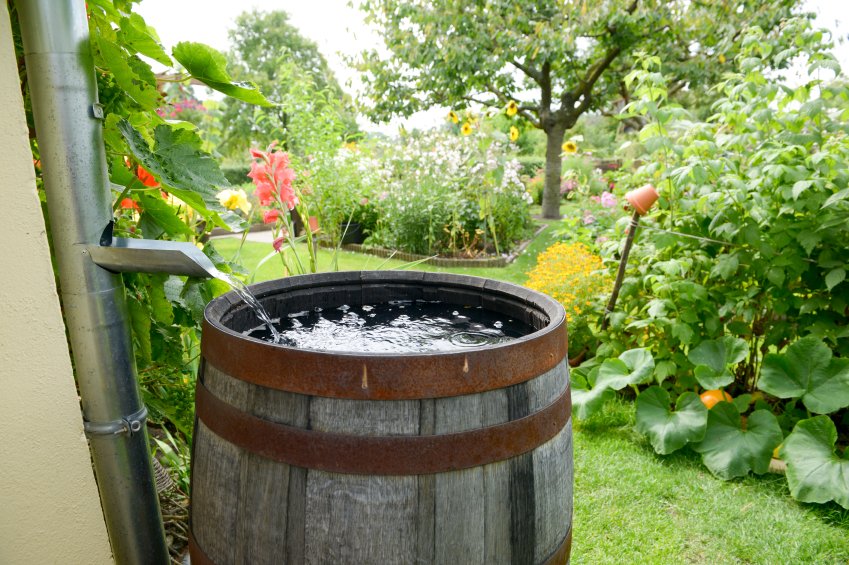 |
Advisor: What is the average life span of a properly maintained rain garden?
RT: Don’t know yet. They haven’t been used long enough in this manner to know when they are done. Research indicates that they do better as they get older. As the biota [Advisor Note: animal and plants of a particular region] in the soil grow and develop, they are increasing root systems and biomass and increasing the infiltration rates. A well-established colony of beneficial microbes and fungi also increases the capacity to break down organic compounds. I’m not aware of an endpoint. Lexington uses a 20-year life span on stormwater BMPs, but that may be a relic from typical engineering devices that are made with concrete.
Advisor: Are there particular stormwater BMPs that are most effective for commercial/industrial facilities?
RT: Generally for commercial/industrial projects, there has been a high amount of impervious surfaces. The problem with that is they quickly produce a high volume of runoff. Detention basins help there, but they were not usually designed or built to address the quality of the runoff. There is a lot of interest now in developing retrofits for existing systems, such as detention basins, to address water quality rather than building new systems. Another consideration is that there could be pollutants of concern for a particular facility that have to be dealt with in a specific manner. Companies located in municipalities that have incentives to develop new, more ecological, systems have an advantage when considering greener solutions.

Photograph copyright Russ Turpin. Used with permission.
Join us for the Rain Gardens webinar on April 21 to get insight you can use to design your rain garden or other mitigation plans. Learn more.
Advisor: We don’t naturally associate stormwater problems in areas that are suffering from drought. However, we all know the damage that things like flash floods can cause. What are the best types of BMPs for facilities in drier areas?
RT: I’m not familiar enough with drier areas, but I know there is a lot of motivation to retain stormwater and use it to some advantage. The West struggles with conflicts concerning water rights—very complicated legal structures. For example, in some states it has been illegal to use rain barrels to capture stormwater because that stormwater ostensibly belongs to someone else who had the rights before you. Most states, as far as I know, have gotten past that, but you can see how something as simple as that can have legal complications.
Advisor: What effect have municipal stormwater fees had on facilities seeking more eco-friendly stormwater solutions?
RT: It’s been mixed. Just a little background in Lexington. In 2010, Lexington came under a consent decree with the EPA and the Kentucky Division of Water because the city was not meeting Clean Water Act standards. The sanitary sewer systems were very old, and there were a lot of SSOs [sanitary sewer overflows]. Stormwater was part of part of the problem, too. Because of leaky sanitary systems, most of our overflows were during heavy rains. Stormwater became a big deal and Lexington started a stormwater fee based on the amount of impervious area. Residential properties paid a flat rate for one “Equivalent Residential Unit”—2,500 square feet. Commercial and industrial facilities paid a fee based on the number of these units of impervious surface. When developing the program, city officials looked at other communities in the East. Some communities offered credits for facilities that either reduce impervious areas and/or install BMPs that address stormwater runoff. The idea was that if runoff is not being produced, the city has less burden on its infrastructure to deal with. In practice, Lexington’s city council found numerous cities where the credit system was underused and had no cost savings for the property owner.
Rain Gardens: Evaluating the Use of Stormwater Best Management Practices (BMPs) to Meet Permit Requirements and Water Quality Standards
Register now to learn which mitigation strategies, including implementing a rain garden program, are best for your organization. Register today!
Advisor: Other than compliance enforcement, what are some incentives municipalities are offering to facilities that incorporate more eco-friendly strategies in their SWPPPs?
RT: Well, there are the credits. But the improvement has to be cost-effective with any given credit. In its research, Lexington found that commercial/industrial facilities were not using the credit because the ROI [return on investment] was not worth the initial investment. In some cases, the property owners would never see a return on investment, despite their good intentions. So, instead of a credit, Lexington established a grant program as an incentive. Property owners can apply for a grant to fund BMPs. Coca-Cola used this incentive for additional stormwater BMPs.

Photograph copyright Russ Turpin. Used with permission.
We’ve done five or six other rain gardens through these grants. They have proven more useful and successful than credits. It’s a competitive process and the city gets to pick the biggest bang for the buck in terms of water quality. And the applicant approaches the city with a plan rather than the city going after the property owner. It’s also good for the city to have willing, proactive landowners. In essence, the incentive grants are more effective because they are able to fund water quality projects that would not be financially feasible with a credit/rebate (or return on investment). It is a more streamlined administrative process and develops a competitive market because proposals are scored, ranked, and selected by a stormwater board.

1 thought on “Build a Rain Garden into Your SWPPP (con’t)”